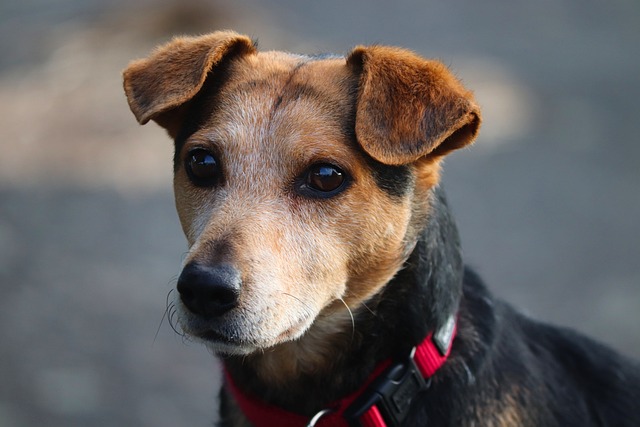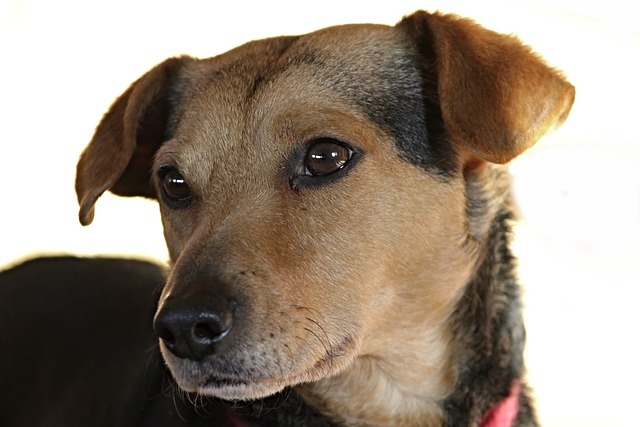When our beloved dogs are unfortunately infected with canine parvovirus (CPV), the owners are often anxious to see the once lively fur children curled up in the nest, vomiting, diarrhea, and even blood in the stool. This highly contagious disease is extremely harmful to puppies, and the mortality rate has been as high as 60%-90%. However, with the advancement of veterinary clinical treatment technology, as long as the golden treatment period is grasped, through scientific and systematic treatment and careful care, many dogs can regain their vitality. Starting from the pathological mechanism, this article will elaborate on the treatment principles and implementation methods of canine parvovirus disease in detail, providing professional and warm guidance for pet owners.
Canine parvovirus is mainly transmitted through the digestive tract. After the virus particles enter the intestine, they will accurately attack the intestinal mucosal epithelial cells and bone marrow hematopoietic cells. The immune system of puppies is not yet mature, and the virus will cause severe clinical reactions within 48-72 hours: a large number of intestinal villi will necrotize and fall off, resulting in loss of digestion and absorption function, and a large amount of body fluid will be lost through damaged mucosa; bone marrow hematopoietic function will be suppressed, causing anemia and coagulation disorders; the virus may also damage myocardial cells, especially puppies under 4 weeks of age, which are prone to fulminant myocarditis. These pathological changes can cause dogs to suffer from dehydration, electrolyte disorders, acid-base imbalance, secondary bacterial infection and other fatal crises. The core of treatment is to carry out systemic repair of these injuries.
When dogs begin to vomit and diarrhea frequently, the body fluid loss rate is very fast, and severe dehydration (sunken eye sockets, decreased skin elasticity, and prolonged capillary refill time) can occur within 24 hours. At this time, intravenous infusion must be used to establish a life channel, and the fluid replacement plan must be accurately calculated according to the degree of dehydration (mild 5%-6%, moderate 6%-8%, severe 8%-10%), weight and clinical symptoms. Commonly used balanced solutions (such as Ringer's solution and lactated Ringer's solution) can replenish electrolytes, 5% glucose solution provides energy, and sodium bicarbonate corrects acidosis (when the dog breathes deeply and quickly and the oral mucosa is cyanotic, it indicates that metabolic acidosis may exist). It is worth noting that the infusion rate and total amount must be strictly controlled. Too fast may cause pulmonary edema, and too slow may not correct shock in time. The veterinarian will dynamically adjust the plan by monitoring urine volume (ideally 1-2ml/kg per hour) and heart rate (normal heart rate of puppies is 100-160 times/minute).

Although there is no specific drug that can directly kill parvovirus, the early use of high-immune serum or monoclonal antibodies can neutralize free viruses in the blood and reduce viral load. These biological products contain specific antibodies against viral antigens and are recommended to be used within 48 hours of onset. The dose is usually 0.5-1ml/kg for 3-5 consecutive days. At the same time, interferon α can induce host cells to produce antiviral proteins and inhibit viral replication, especially for intestinal cases. At the symptomatic treatment level, antiemetics (such as maropitant and ondansetron) can relieve frequent vomiting, reduce gastric acid irritation and fluid loss; intestinal mucosal protectants such as montmorillonite powder can adsorb viruses and repair damaged intestinal walls; for dogs with severe bloody stools, hemostatic drugs such as hemostatics and vitamin K1 should also be used to prevent the aggravation of hemorrhagic anemia.
After the intestinal mucosal barrier is destroyed, intestinal conditional pathogens such as Escherichia coli and Salmonella will take advantage of the opportunity to enter and cause sepsis or toxemia. Therefore, the rational use of antibiotics is an important part of treatment. Veterinarians usually choose broad-spectrum antibiotics, such as ceftriaxone sodium and enrofloxacin (note that puppies should use fluoroquinolones with caution to avoid cartilage damage). It is best to select sensitive drugs through fecal bacterial culture and drug sensitivity test before medication. The course of treatment generally lasts until 48 hours after the clinical symptoms disappear. It is important to remind you that antibiotics should be used strictly in accordance with veterinary guidance. Abuse may lead to intestinal flora imbalance and worsen the condition.
During the illness, dogs lose their appetite, intestinal function is impaired, and insufficient nutrition intake will lead to further decline in immunity. After vomiting is relieved (usually 24-48 hours after treatment), you can try to feed a small amount of warm and cool nutritional paste or prescription canned food multiple times, choose a hydrolyzed protein formula that is easy to digest and absorb, and avoid lactose and fat irritating the intestine. For dogs with severe anorexia, parenteral nutrition such as amino acids and fat emulsions should be supplemented intravenously to maintain daily basic energy needs (about 60-80kcal/kg/day for puppies). It is worth noting that if vomiting occurs in the early stage of feeding, oral feeding should be stopped immediately, and nutrition should continue to be provided through the intravenous route until intestinal function is basically restored.
During the treatment process, the owner's companionship and care are essential. When the dog's body temperature is too low (below 37.5℃), it is necessary to wrap the electric heating pad with a blanket (temperature not exceeding 40℃) to keep warm and avoid direct contact and burns; frequent diarrhea will cause redness, swelling and ulceration of the skin around the anus. After each defecation, it should be gently cleaned with warm water and protected with vaseline; for weak dogs, help to turn over every 2-3 hours to prevent bedsores. At the same time, closely observe the number of defecation, vomitus characteristics, and mental state changes, and promptly report to the veterinarian to adjust the treatment plan. When the dog starts to drink water actively, the number of defecation decreases, and the feces gradually form, it is often a sign of improvement. At this time, it is necessary to be patient and care to avoid changing food too early or reducing medication.
Faced with the dog in the bed, the owner often falls into the misunderstanding of over-treatment or giving up treatment due to anxiety. The veterinarian needs to fully communicate with the owner and explain the law of disease development: the course of parvovirus disease is about 7-10 days, and the 3rd to 5th day is the most severe period of symptoms. After the dangerous period, the chance of recovery is significantly increased. During the treatment, the condition may recur. For example, if a dog that was originally getting better suddenly vomits again, it is necessary to calmly check whether it is caused by improper feeding, electrolyte imbalance or secondary infection, rather than simply concluding that the treatment is ineffective. The owner's emotional stability and positive encouragement can be transmitted to the dog through physical contact. Although this emotional support is invisible, it can enhance the dog's will to survive and form a joint treatment force between doctors and patients.
Compared with the difficulty of treatment, prevention is more important. Puppies that have not completed immunization are a high-risk group. The first vaccination should start at 6-8 weeks of age, once every 3 weeks, for 3-4 consecutive times, and then strengthen immunization every year. Daily attention should be paid to environmental disinfection. Parvovirus is highly resistant to ordinary disinfectants. It is recommended to use 1:30 sodium hypochlorite solution to wipe the floor and utensils. The virus can survive for several months in a room temperature environment. New dogs need to be isolated and observed for more than 2 weeks before being introduced. For breeding farms or kennels, regular monitoring of the health status of the population, timely detection of latent infections and isolation and treatment can effectively control the spread of the epidemic.
The treatment of canine parvovirus is not only a life-saving medical measure, but also a deep emotional connection between people and pets. It reminds us that while enjoying the company of our furry friends, we also need to take on the responsibility of scientific care - timely immunization, regular physical examinations, and timely medical treatment. These seemingly ordinary actions are the most solid barriers to protect their health.






